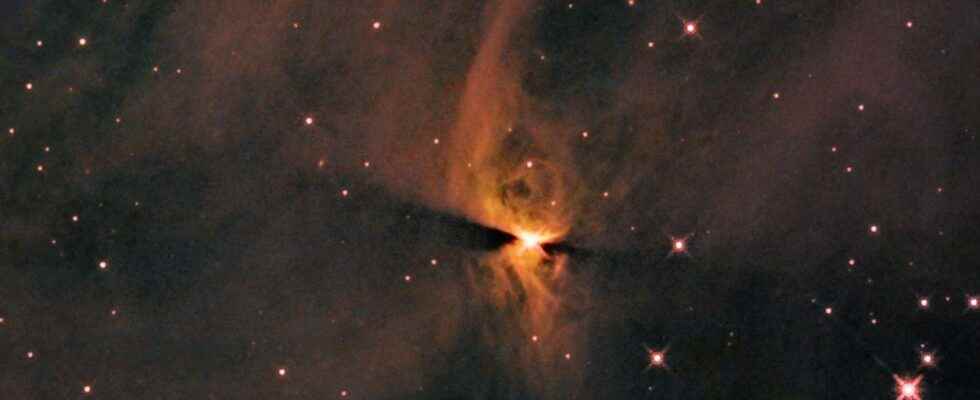Hubble’s resolution capabilities and its presence in space make it a tool of choice for zooming in on stars whose interest is first revealed by other instruments. NASA recently uploaded an image from Hubble showing a nascent star, a protostar.
You will also be interested
[EN VIDÉO] Edwin Hubble, surveyor of the Universe Astronomer Edwin Hubble changed our view of the Universe by showing for the first time in the 1920s that nebulae like Andromeda were in fact galaxies like the Milky Way. We also owe him for having placed one of the stones on which the Big Bang theory will rise. More about the man and his discoveries in this video!
As Futura recalled on the occasion of the presentation of the images taken by Hubble showing a stellar stream of the protostar Parengo 2042, we now know beyond a shadow of a doubt that stars are born from clouds Of gas and dust that collapse under their own gravitational pull. As the cloud collapses, a dense, hot core forms in equilibrium under its own pressure thermal, but can become convective.
Let us recall that, as long as a residual envelope of gas accreting on the central object has not dissipated and that classical thermonuclear reactions, for stars on the famous main sequence that we can see on the Hertzsprung-Russell diagram, have not yet ignited, we speak of a protostar.
A star formation presentation with simulations and images from Hubble. To obtain a fairly accurate French translation, click on the white rectangle at the bottom right. The English subtitles should then appear. Then click on the nut to the right of the rectangle, then on “Subtitles” and finally on “Translate automatically”. Choose “French”. © Nasa Goddard
312 protostars under the eye of Hubble
Hubble studies this kind ofstars for some time now and the images that NASA recently uploaded also relate to the protostar J1672835.29-763111.64, located in the reflection nebula IC 2631, which is part of a major region of star formation in the constellation southern Chameleon.
Recall also that, unlike nebulae in emission which are ionized by radiation from young stars, reflection nebulae are clouds of dust that simply reflect their light.
The NASA image showing a protostar in IC 2631 is the result of an observation campaign conducted with Hubble and which consisted of zooming in on 312 protostars within molecular clouds previously identified with telescopes infrared Spitzer and Herschel. This is because protostars are mainly visible in infrared light because they indirectly emit a lot in this band. wavelength. These emissions come from the dust which surrounds them, dust which on the other hand blocks their visible light and which is heated by the process of formation of protostars and by their radiation.
Interested in what you just read?
.
fs3
